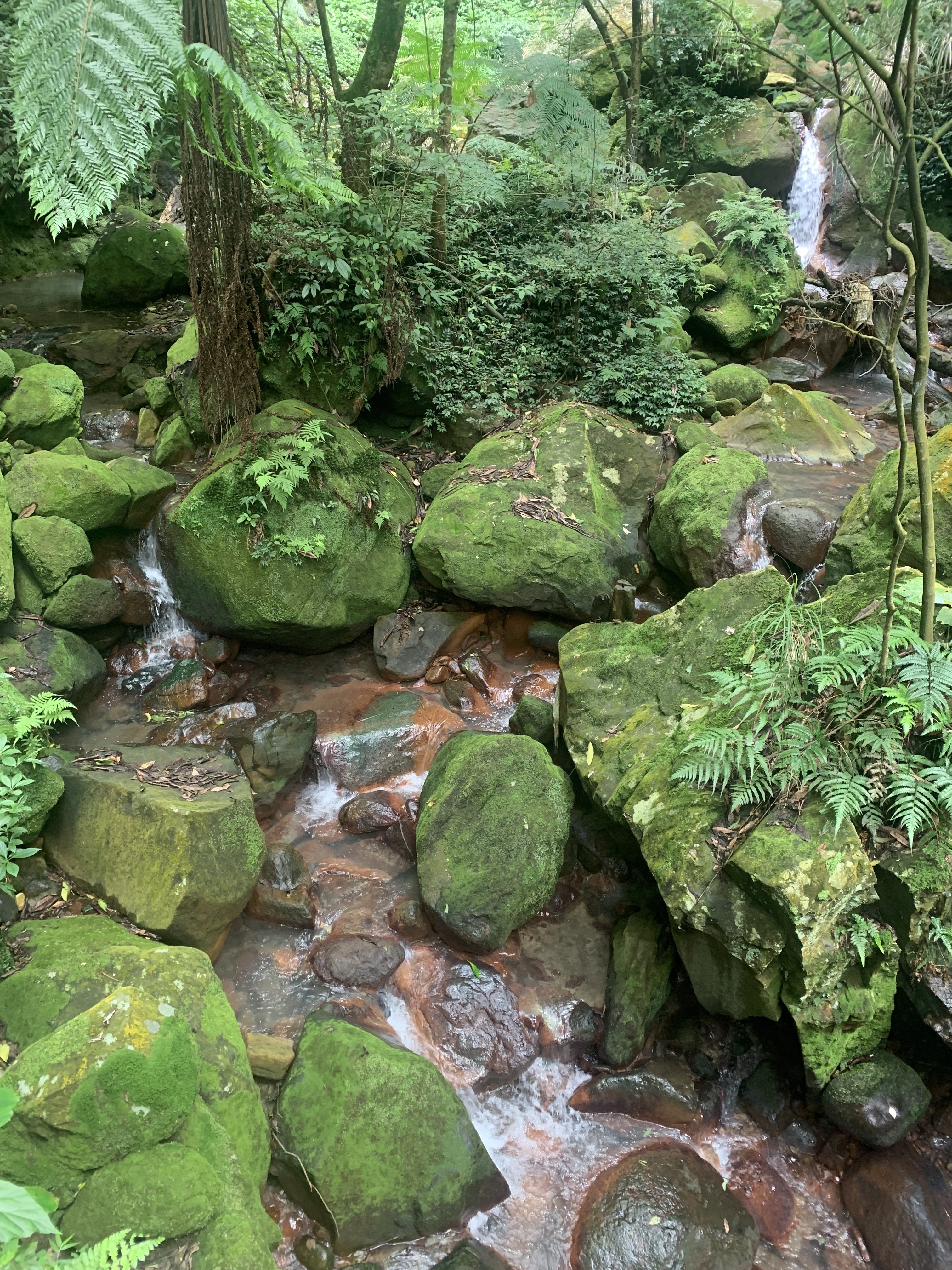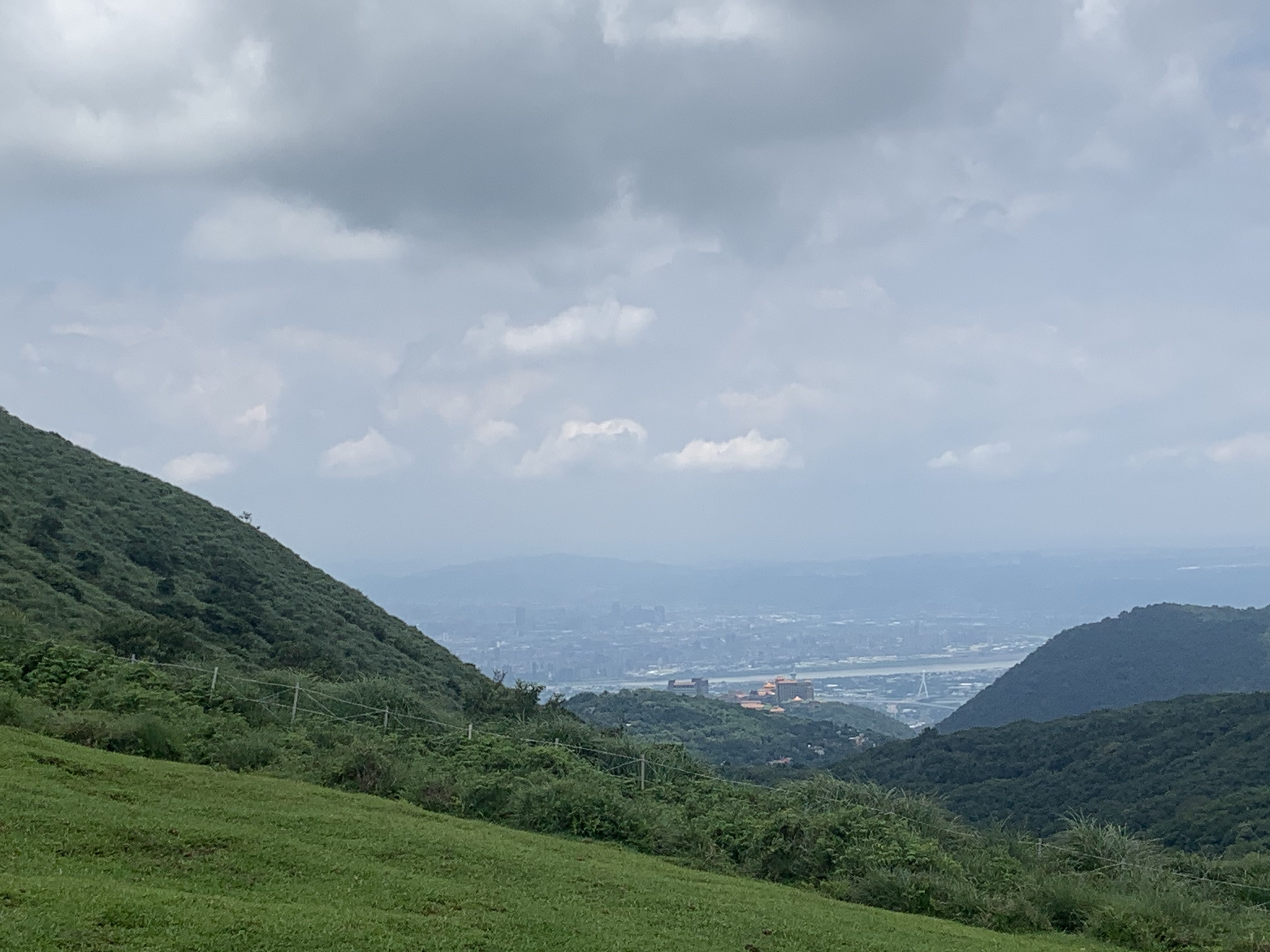Yangmingshan National Park

06/28/2023 | Article and all photos By Chubby Squirrel
After four long years of COVID travel restrictions, I was finally able to visit Taiwan again this summer! My parents and I stayed for three weeks, and got to see aunts, uncles, grandparents, and old friends. I was especially excited to see my cousins, who came at the same time as us from California, whom I haven’t seen since 2018. Flying from our house on the US east coast to Los Angeles took five hours, and then we had to wait in the airport for eight more hours before boarding a 12-hour flight to Taiwan. Needless to say, the journey was unenjoyable. However, as I stepped foot out of the Taoyuan International Airport, the distinctive, humid air recalled fond memories of trips in years past.
After barely adjusting to the half-a-day time difference, being me, the first thing I wanted to do was go on a hike. The deciduous forests on the US east coast are beautiful and relatively temperate even in the summer, making for comfortable and relaxing hikes, but the Taiwanese jungle is an entirely different beast, and one that I wished to challenge again. After an hour of pleading and bribes in the form of delectable Taiwanese pineapple tarts, my dad agreed to accompany me, and we ended up choosing Yangmingshan National Park as the site of our expedition. It was close to our residence and easily accessible by public transportation. Besides, it was right next to the college he went to many decades ago, so it would be a trip down memory lane for him.

A view of the "Milk Lake" from above. The pond has its distinct color due to sulfurous fumes from the lakebed. The water temperature is around 40C/104F
Yangmingshan (陽明山 in Traditional Chinese) was originally named Grass Mountain (Caoshan 草山) due to its distinctive grassy plains, but was renamed in 1950 to commemorate Ming Dynasty scholar Wang Yangming. Due to its unique position and post-volcanic activity, the park contains subtropical rainforests, evergreen forests, as well as mountain ridge grasslands. It’s one of the smaller mountains in Taiwan, but a lot of high-altitude vegetation can be found there due to the relatively low temperatures year-round, owing to its unique geographic placement.

Qingtiangang, the grassland we arrived at on the top of the mountain
Without our own car, we took advantage of the city’s refreshingly convenient and clean public transportation. However, getting to the bus stop was an excruciatingly slow process - it was too far to walk, so we had to rent a motor scooter, which was electric and had only a single motor carrying the two of us. Its maximum speed was 45kmh, which is roughly equivalent to 27mph, a little more than the speed one would drive at in a suburban neighborhood. However, the bus ride was another story altogether, as the driver took us up the mountain at a speed that was undoubtedly dangerous, accelerating instead of hitting the brakes on 270-degree curves in the road. By the time we reached the trailhead, my arms were already sore from gripping the bus handles tightly to avoid being thrown across the vehicle.

The first kilometer of the trail followed an aqueduct, and was mostly dirt and slipper stone

Later, we went on another trail that was a bit less slippery, as it was made from gravel, but was no less "stairy"
We entered the national park through the inconspicuous Juansi Waterfall Trailhead. The trail was made more than a century ago during the Japanese occupation of the island for the creation of an aqueduct that would bring water to tea farms, which once covered many of Taiwan’s mountains. Heading into the jungle, the screeches of cicadas were overwhelming, and my dad and I had to scream at each other in order to be heard over the din. The trail was half dirt, half stone, which made for treacherous hiking, as the extremely humid environment cultivated thick layers of slippery moss on every surface, almost causing me injury more than once.
After only a kilometer or so, we arrived at the waterfall, named Juansi (“silk” in Chinese) due to its elegant appearance. All around, rocks were different shades of red, oxidized by unique chemicals in the water. The sound of the waterfall mixed with the sounds of the forest, and I couldn’t hear any of the other hikers. It felt surreal, as though I were in an ancient natural paradise untouched by human influences over time. In a way, I was.


The beautiful Juansi Waterfall and a photo of the lush jungle surrounding it
Continuing along the trail, we climbed a few sets of slippery stone stairs, and after around ten minutes, reached a creek. It appeared so clean that the two of us stepped right in and splashed the refreshing water all over our sweat-soaked bodies, taking a much-needed rest. After all, the Taiwanese street food that we had been gorging on since we arrived did not make us any lighter. Hiking on, the trail emerged out of the jungle, and we were were shocked to see a vast, rolling grassland populated by numerous wild oxen.

Oxen grazing on the grassland on the mountaintop (Qingtiangang)
The top of the mountain was naturally flat due to lava flow many eons past, and was used during the Japanese occupation to farm cattle and tea. However, since being designated a national park, there is no longer any farming, and the oxen have been allowed to roam free, restrained only by an inconspicuous fence. It’s difficult to describe in words just how magnificent this grassland was - but if you attempt to imagine the general warm, jovial atmosphere of a sunny summer’s day, a light blue sky complementing the lush, vibrant green grassland below it, and a panoramic view of the beautiful skyscrapers of Taipei City presenting a surreal backdrop - you may get a feeling of how the Qingtiangang Grassland appeared to me when I first saw it. Although there were many tourists, some picnicking on the soft grass, others photographing the oxen, the area was quiet and peaceful, a rare gem in the bustling urban metropolis surrounding it.

Breathtaking views of the grassland
It was around noon when our stomachs began to complain from the strain of hiking, so we stopped by the gift shop to buy boba teas (which are significantly more affordable in Taiwan compared to their counterparts in the States) before catching a bus to my dad’s alma mater, which was only a 10-minute drive away. The Chinese Culture University had a beautiful campus, situated on the mountainside with a plaza overlooking part of Taipei City and the Tamsui River. My dad showed me around the small restaurants that he and his friends used to frequent, and although the doors to the actual buildings were locked, it was nice to get a glimpse into what his life was like back in the day.

Taipei City can be seen from Qingtiangang, and so can my dad's college - if you look closely, you'll see the buildings with the orange roofs

Beautiful view of Taipei City and the Tamsui River from my dad's college
Heading back down the mountain that day, I was content. Our hike in Yangmingshan National Park was relatively short compared to the usual distance I hike in the States, but I was just getting started. For a brief moment, I was able to escape the hustle and bustle of the capital city and breathe in the fragrant forest air. Then, it was back to spoiling my appetite with unhealthy amounts of steamed buns, boba tea, rice cakes, omelettes, and other delicious foodstuffs that one can only find in the beautiful island of Taiwan!